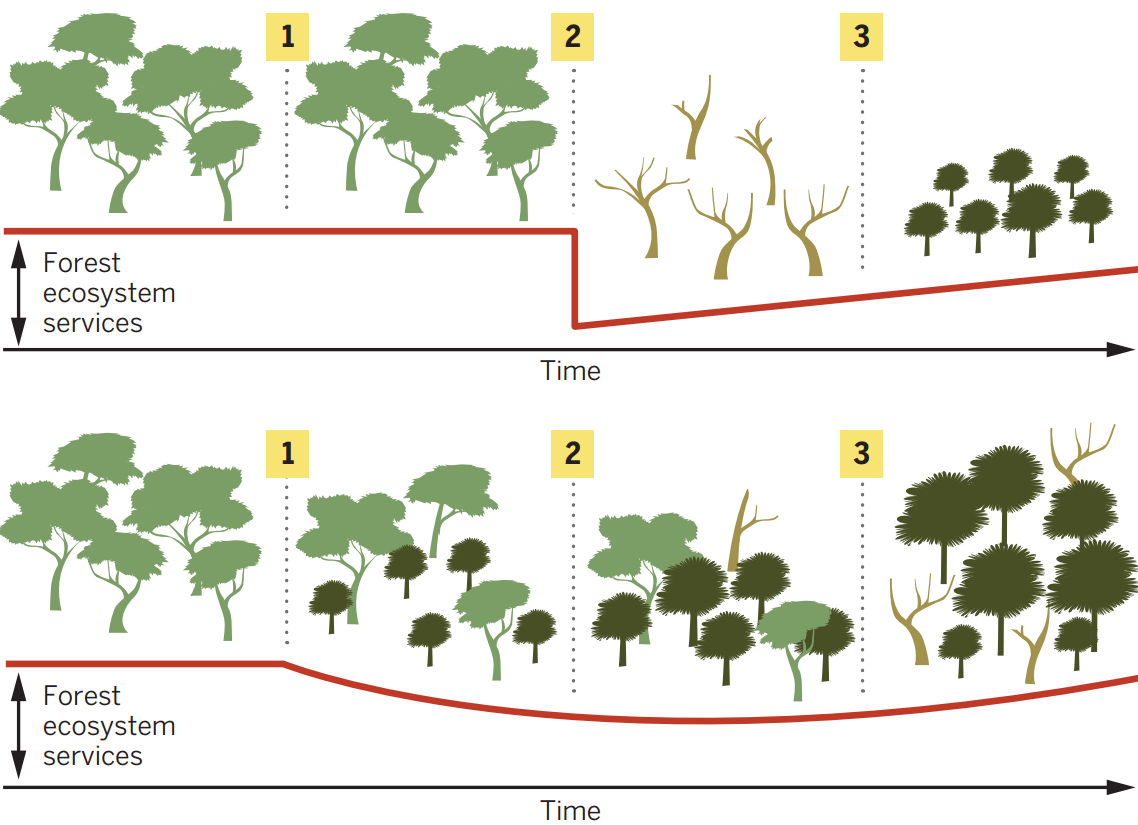A review paper published last month in Science highlights the threats to temperate forests posed by anthropogenic global warming. Millar and Stephenson (2015) in particular focus on climate-change-related “hotter droughts”, compound stressors, and “megadisturbances” that can cause the collapse of forest ecosystems and interruption of ecosystem services such as water, biodiversity, and wood products. In light of the ongoing mountain pine beetle epidemic, this is not an abstract future scenario for British Columbian forests and the communities that depend on them.
One of the figures in Millar and Stephenson (2015) is particularly pertinent to the work we do in the Aitken lab. It illustrates two contrasting management approaches: the first, “reactive”, approach aims to maintain ecosystem services at historical levels by protecting the existing ecosystem structure and function; the second, “proactive”, approach accepts lower ecosystem services in order to facilitate a transition to a more resilient ecosystem state. The “reactive” approach is prone to sudden collapse of the ecosystem and its associated ecosystem services, with slow subsequent recovery to a new set of ecosystem services; the “proactive” approach aims to achieve a gradual transition in which ecosystem services are continually available, though at reduced levels. A proactive management approach is obviously desirable, but achieving it in practice will likely prove to be difficult. The proactive forest managers in this illustration chose the right species for the future climate. Would that choice be so obvious in reality?

Figure 4 from Millar and Stephenson (2015), illustrating reactive vs proactive approaches to managing ecosystem services in the face of climate change
Informing appropriate reforestation strategies for uncertain future climates is an overarching goal of our research at the Aitken lab. We focus on understanding how existing populations of trees might be adapted to a range of anticipated future climates of their source locations, or of new locations where they may be better adapted. In the illustration from Millar and Stephenson (2015), a different species is introduced to the ecosystem. The Aitken lab generally investigates a more intermediate approach, in which seedlings from a non-local population of a native tree species are introduced to harvested stands. The same principal applies, however: diversity is the simplest hedge against uncertainty. All the better if the composition—the species and genotypes—of this introduced diversity is well-informed.
